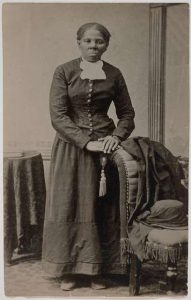Winner of the Spring 2018 StMU History Media Award for
Best Article in the Category of “Crime”
Article with the Best Introduction
In today’s society, we are taught at a young age to never speak to strangers without our parents around or by ourselves in general. However, in the late 1920s, it was a different time of danger and being more aggressive in hate crimes and violence. Sadly, those “norms” would erupt in a rise of terror and isolation within Brooklyn, New York. On February 11, 1927, two boys, Billy Gaffney and Billy Beaton, were having fun within their apartment, unsupervised. A few hours passed, both boys could not be found, until someone found Billy Beaton alone on the apartment roof. When asked where Billy Gaffney had gone, he responded with, “The boogey man took him.”1
This “boogey man” who took Billy Gaffney was indeed one’s worst nightmare. Calling him a man certainly does not do justice to the true monster that this “boogey man” Albert Fish was. At fifty-six years old, Albert Fish already had quite a life before that February day in 1927. He had been born on May 19, 1870 in Washington D.C. Originally named Hamilton Fish, Albert was the youngest of his three siblings. However, Fish had no clue as to who he would become. He was raised in a family whose members had mental health issues. His family was mostly illiterate, and to make matters worse, his own mother, when he was at the age of five, put him in an orphanage due to financial problems. Albert’s time in St. Johns Orphanage sparked a dangerous set of behaviors. He was frequently abused and beaten at the orphanage, but he soon developed something of an enjoyment of the feeling of physical pain, often giving him erections.1 In 1879, Albert’s mother was back on her feet financially and able to support Fish again. But Fish went from the abusive environment of the orphanage to a crowd of neighborhood youths who introduced the nine-year-old Fish to the practices of drinking urine, as well as to coprophagia (the act of eating feces or dung). He also started visiting public bath houses to watch young boys undress. Poor Fish’s mother had no idea that in her absence, her son was developing disturbing behaviors.
By 1890, twenty-year-old Fish had moved to New York City. In this part of Fish’s life, his behaviors escalated to rape, sodomy, and then to castration, mostly on male individuals of lower social status, such as African-American males and disadvantage males whom he believed would not be missed.3 He continued his acts of complete horror even after being arranged into a marriage in 1898 with his wife.4
During his marriage, he and his wife had six children together. He never abused his own children in any way, but he did became a house painter and usually targeted homes with young boys aged around six and continued with molestation and a morbid and horrid interest in castration.5 He was then incarcerated in 1903 for embezzlement, which then led to Fish regularly having sex with men in prison. However, his actions led to his divorce from his wife in 1917, who left him for a handyman named John Straube, and taking all of their children. That only made Fish become more sunk into a hole of obsession and terror.6 He began having morbid and frightening thoughts, and developing cravings such as cannibalism in which he enacted upon his victims in murdering them. Surprisingly, he had never been caught committing any of these murders, and if he were ever close to getting caught, he would flee the city. That is, up until Fish made a big mistake, which later helped solve the mysterious disappearance and murder of Billy Gaffney. This was possible through the unfortunately more famous case of the murder of a young girl, Grace Budd.

Grace Budd was an eleven-year-old girl who lived in a farmhouse with her brother, mother, and father. In a newspaper advertisement, Albert Fish found a man by the name of Edward Budd looking for a job. Fish then marked Edward Budd to be his next victim.7 Soon after, Fish responded to the newspaper ad by posing as a wealthy farmer named Frank Howard in need of help on his farm, and he began to be friendly with the Budd family.8 Fish’s plans, however, had switched after he discovered Edward Budd had a younger sister Grace, who seemed to be far more vulnerable than Edward had been. This is when Fish began to create a disgusting and horrible scheme to capture the young Grace Budd. Fish convinced the parents to let Grace accompany him to his sisters’ birthday party, which he completely fabricated.9 Fish took Grace and she never returned home after that day. Only after seven years, on November 11, 1934, were the details to what had happened to innocent Grace discovered. Fish sent a letter to the parents of Grace Budd detailing what he had done to her.8 To their horror, he confessed that he cooked parts of her to taste her flesh. He detailed her last moments, describing the torture and truly horrid acts Fish had committed upon her before Grace Budds’ final moments on earth. One would hope that Fish would end the letter on that horrifying and heart breaking note; however, he then described the process of preparing her body to feast upon, the parts of the body he had used, the taste of their daughters’ flesh and how he found her taste so satisfying. He then included at the end of the letter how he left her a virgin, as if that would lighten the terrible acts that he had committed on the young and innocent Grace Budd and her family.11
It was only through this tragic incident that justice came about for Albert Fish’s horrendous act of murder. Fish’s letter to the Budd family was just enough evidence to find and capture him. Detective William King helped track down and arrest Albert Fish using symbols on the stationary he used to write to the Budd family, “N.Y.P.C.B.A.” standing for “New York Private Chauffeur’s Benevolent Association.” King successfully located where it had come from, tracing it back to a room at 200 East 52nd Street from a janitor who had moved from there. This location was the exact place where Fish came frequently to receive his mail. Finally, this helped investigator William F. King pinpoint exactly where Albert Fish would be; waiting right outside of his room.12

Fish was captured and taken in for questioning. During questioning, Fish admitted to murdering Grace Budd and confessed to the investigators exactly where he had buried the remains of Grace Budd. They were able to locate Grace Budd’s bones, which were located behind Wisteria Cottage, an abandoned house in Westchester County. Fish then confessed to eating parts of Budd’s body, as well as to the murder of Billy Gaffney, including the torment he had done to Billy.8 After Fish’s arrest, he did not care for the consequences and looked very much forward to having his penalty be death. In March 1935, Fish pleaded sane but guilty.14 The court decided that he was sane, and accepted his plea of guilt.15.

Fish was executed on January 16, 1938 in the electric chair in Sing Sing Prison. Even to his death he continued his bizarre behavior, exclaiming that being electrocuted would be “the supreme thrill” of his life.9. Therefore, Albert Fish had never really suffered any consequences. Even to his death, Albert Fish took pleasure in his morbid thoughts and ultimately met the peak of his horrid obsession.
- Murderpedia: The Encyclopedia of Murderers, June 2017, s.v. “Albert Fish,” by Juan Ignacio Blanco. ↵
- Murderpedia: The Encyclopedia of Murderers, June 2017, s.v. “Albert Fish,” by Juan Ignacio Blanco. ↵
- Martin Fido, True Crime: The Infamous Villains of Modern History and Their Hideous Crimes (United Kingdom: Carlton Publishing Group, 2013), 186. ↵
- Murderpedia: The Encyclopedia of Murderers, June 2017, s.v. “Albert Fish,” by Juan Ignacio Blanco. ↵
- “Evil serial killer known as the Brooklyn Vampire who kidnapped children and cut them up and ATE them, known as the Gray Man and the Werewolf of Wisteria murderer Albert Fish was one of the most twisted serial killers,” Daily Mirror, The: Web Edition Articles (September 2017): 9. ↵
- Murderpedia: The Encyclopedia of Murderers, June 2017, s.v. “Albert Fish” by Juan Ignacio Blanco. ↵
- Murderpedia: The Encyclopedia of Murderers, June 2017, s.v. “Albert Fish,” by Juan Ignacio Blanco. ↵
- Salem Press Biographical Encyclopedia, 2017, s.v. “Albert Fish,” by Bernadette L. Bosky. ↵
- Murderpedia: The Encyclopedia of Murderers, June 2017, s.v. “Albert Fish” by Juan Ignacio Blanco. ↵
- Salem Press Biographical Encyclopedia, 2017, s.v. “Albert Fish,” by Bernadette L. Bosky. ↵
- Salem Press Biographical Encyclopedia, 2017, s.v. “Albert Fish,” by Bernadette L. Bosky. ↵
- Salem Press Biographical Encyclopedia, 2017, s.v. “Albert Fish,” by Bernadette L. Bosky. ↵
- Salem Press Biographical Encyclopedia, 2017, s.v. “Albert Fish,” by Bernadette L. Bosky. ↵
- Salem Press Biographical Encyclopedia, 2017, s.v. “Albert Fish,” by Bernadette L. Bosky. ↵
- Salem Press Encyclopedia of Science, 2013, s.v. “Irresistible impulse rule.” By Mario Morelli. ↵
- Murderpedia: The Encyclopedia of Murderers, June 2017, s.v. “Albert Fish” by Juan Ignacio Blanco. ↵



202 comments
Roman Olivera
“The Boogey Man Took Him”: The Cannibalistic Serial Killer Albert Fish
The title of this article says it all. The real “Boogey Man,” that would be any child’s worst nightmare or any parent for that matter. I look at the events in the article that chronicle his family history of metal illness and the physical abuse that young Albert Fish endured at the hand of the orphanage. First we see abuse of authority by the staff at the orphanage that was entrusted to take care of the young boy, but physically tortured him as punishment for behavior that was possibly caused by mental illness. We can see that his mental illness has caused confusion in him physically and emotionally, as he began to be excited sexually by the abuse. This orphanage is also a place where he began to have an attraction towards young boys sexually which continued on throughout the rest his life. The abuses do not stopped there as the society also failed to protect the young boy as he was returned to his mother as the neighborhood children exploited his mental illness. This is no excuse for his actions as an adult, however it has set him up for some pretty grim fetishes and debased mindset which set off the chain of events his his life that would make him a dangerous person for anyone to encounter. Though the article does not go into much detail about the Billy Gaffney murder, the Grace Budd murder sheds a lot of light on his mental state about what he was doing to his victims and how he chose them. He was killer of opportunity who chose to prey on the weak. His first victims were young boys which is who he seemed to prefer, as he had a sexual attraction to them and molestation was a motive. Later in his life its seems he had developed other issues that lead him to murder for the purpose or cannibalism though his preferences still had not changed, he still preferred young boys ,but just seen young Grace Budd as an easier prey than her brother at the time. This shows the ability to premeditate his actions, thus making what he is doing a conscious decision to abduct and murder his victims. Someone who is this sinister and demented surely had more victims that he was charged to death for, but it seams to me that in the early 1900s the forensics would not have been in place to prove just how many murders and other unspeakable acts Albert Fish was actually responsible for committing. Though he expressed that the electric chair would be a “Supreme Thrill,” I doubt his judgement and punishment in the afterlife will be as such.
William Ward
A bone-chilling article from start to finish. Astounding how a person, if he could be considered that, could possess so much malice and evil. It is difficult to imagine how the families of his victims felt learning their loved ones had been taken away by such a man and in such a fashion. Wonderfully written article and it is not hard to see why it won an award.
Mariah Garcia
There are malicious people and crimes that haven’t been solved. But knowing that this man, Albert Fish, was caught must have been wonderful news to the people in the 1920s. It is eerie to read how this man wanted the death penalty. He was mentally disturbed so his sentence was not comparable to the pain he inflected on the families and children who he affected. I can’t imagine such a person walking the streets. However, there are malicious and mentally disturbed people and it is important to be aware of your surroundings, especially those who are strangers to you.
Pedro Gonzalez Aboyte
Great article. Once I began to read, I couldn’t stop. It is heavily disturbing to think that people like Albert exist. Even after committing all of these heinous acts, he still felt no remorse and wanted to get electrocuted because of the thrill. It is truly sickening to know that he began to enjoy the feeling of pain to the point where it brought him ecstasy and ate human flesh because he liked the way it tasted. I can’t imagine the pain and horror those young children felt. Albert Fish was a sick man who had no sense of empathy and although he claimed to be sane, I think he was not.
Madison Guerra
I found this article absolutely creepy. It is scary to think that there was a man this horrible walking the earth and its scary to think that there could be plenty of other people like this that have yet to be caught. it is horrible how people could possibly end up like this due to bad upbringing and mental illness. It shows that you truly cannot trust people and you never really know who are dealing with and to always be careful.
William Rittenhouse
You have chosen a very intriguing, but at the same time very sickening article. I never knew a person like this could exist. One question I have is how does a person become that sick? I know people who have lived some pretty messed up childhoods, but they turned into better people because of it. To me it just demonstrates the extremity of mental sickness. It is an issue and it can improve as long as you seek help. It doesn’t sound like Fish had any help whatsoever. I can’t even begin to imagine the trauma he caused to the victims families.
Daniela Duran
Reading this article was truly a scary experience. As I read further into the story, however, I could not stop reading…It was simply too amusing to discover how someone can develop these kinds of obsessions and feelings. This article actually helped me understand that everyone has a background; this does not mean that the bad things we do are justifiable, but perhaps some people who are disadvantaged in comparison to others, are the ones who end up like Albert Fish. Probably most of his phycological problems came from inheritance and from the fact he was abandoned and abused when little. Nevertheless, what he did was simply horrifying. It was completely insane to see how satisfied he was with all the horrible things he did, and I consider that the author was particularly good at capturing the detail. The lack of censor in this article is what truly makes the entire story so dramatic, and although it was quite overwhelming, it was also very enjoyable.
Luis Magana
Reading this article gave me the chills how a human being could inflict so much pain on someone and physically eat human flesh. After committing so many horrendous crimes I can’t begin to imagine how the victims and their families felt when Albert Fish took advantage of them. This article made me wonder if there are more people like Albert Fish in this world and has put me on high alert to not talk to strangers.
Avery Looney
This article was very well written. From the beginning to the end the author captured my full attention. It is crazy to think that the environment someone grows up in as a child can lead them to do unthinkable things. Albert Fish is a sick and low human being who preyed on young children.I could never imagine the horror Grace experienced in her last minutes alive and how her parents felt reading the letter from Fish that detailed everything he did to their daughter.
Michael Hinojosa
I never knew someone so horrific ever existed in this world until I read this article. Compared to Fish, Jack the Ripper looks like a normal trick or treater when you compare the two mens morbid habits together. The level of horror and insanity that relate to Fish is something one can only imagine is a pure work of fiction; but the scariest thing about him is that this is all real, nothing in this article is made up and a man like Fish actually existed within the history of our world.